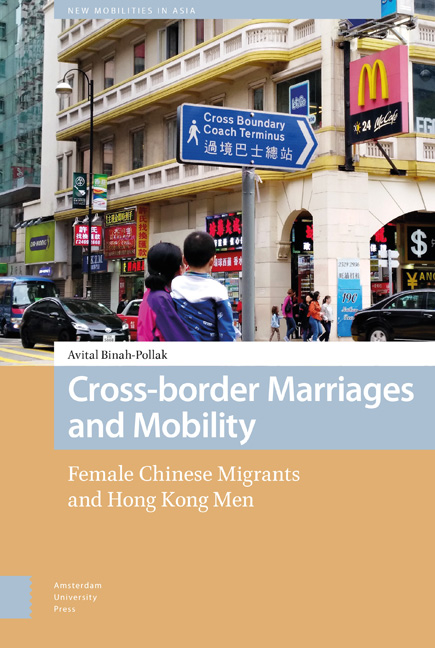Book contents
- Frontmatter
- Contents
- List of Figures and Tables
- Acknowledgments
- Introduction
- 1 The Hong Kong-China Border: A Space of Confinement and Movement
- 2 Motivations for Crossing Borders
- 3 ‘Same as Before, Living as a House Wife’
- 4 Hong Kong's Education: A Bridge to the ‘First World’
- 5 New Voices in Hong Kong: Local Identity Formation
- Concluding Thoughts: Home Is not where the Heart Is but where it Wants to Be
- Bibliography
- Index
1 - The Hong Kong-China Border: A Space of Confinement and Movement
Published online by Cambridge University Press: 21 November 2020
- Frontmatter
- Contents
- List of Figures and Tables
- Acknowledgments
- Introduction
- 1 The Hong Kong-China Border: A Space of Confinement and Movement
- 2 Motivations for Crossing Borders
- 3 ‘Same as Before, Living as a House Wife’
- 4 Hong Kong's Education: A Bridge to the ‘First World’
- 5 New Voices in Hong Kong: Local Identity Formation
- Concluding Thoughts: Home Is not where the Heart Is but where it Wants to Be
- Bibliography
- Index
Summary
One of the first themes that emerged during my ethnographic work was the centrality of the Hong Kong-China border in the women's migration narratives and everyday experiences in Hong Kong. Although the women managed to cross the political border between mainland China and Hong Kong and gain legal citizenship in Hong Kong, their geographic move did not affect many of the social and cultural boundaries they ‘carried’ with them. In this book, the border is not treated as a separate entity or merely as a product of the phenomena that take place at and across it; instead, the border itself is perceived as also producing the social, political and economic context that reconstitutes those phenomena. My main goal in this chapter is to show that the Hong Kong-China border is a very specific type of border and that it is undergoing a process of (re)negotiation.
The border as a theoretical concept
It is commonly agreed that borders have a fundamental impact on the way millions of people live, work, and travel throughout the world. The global increase in the number of borders and the different forces that have created them and nurtured their growth has led scholars from different disciplines to study the phenomena that take place at borders, and to explore the various ways borders help us understand local and global changes (Wilson and Donnan, 2012: 1). Scholarly work about borders is typically divided into two major categories: studies on physical borders, and studies about the border as an image. While studies about the implications of physical and international borders are often situated in the fields of geography and political science, the study of symbolic borders is commonly associated with anthropology and sociology.
The study of symbolic borders only began in the late 1960s, when anthropologists started exploring the concept of ethnic identity. The way groups of people such as the ‘Nuer’ (Evans-Pritchard, 1940) or the ‘Tikopia’ (Firth, 1957) were presented in early anthropological studies made it seem as if these were isolated groups that existed in separate worlds (Hannerz, 1997; Donnan and Wilson, 1999). In most cases, the borders themselves were not the main topic of research, but were instead assumed to be defining and encompassing the cultures and groups which were the central focus of study.
- Type
- Chapter
- Information
- Cross-border Marriages and MobilityFemale Chinese Migrants and Hong Kong Men, pp. 35 - 58Publisher: Amsterdam University PressPrint publication year: 2019



